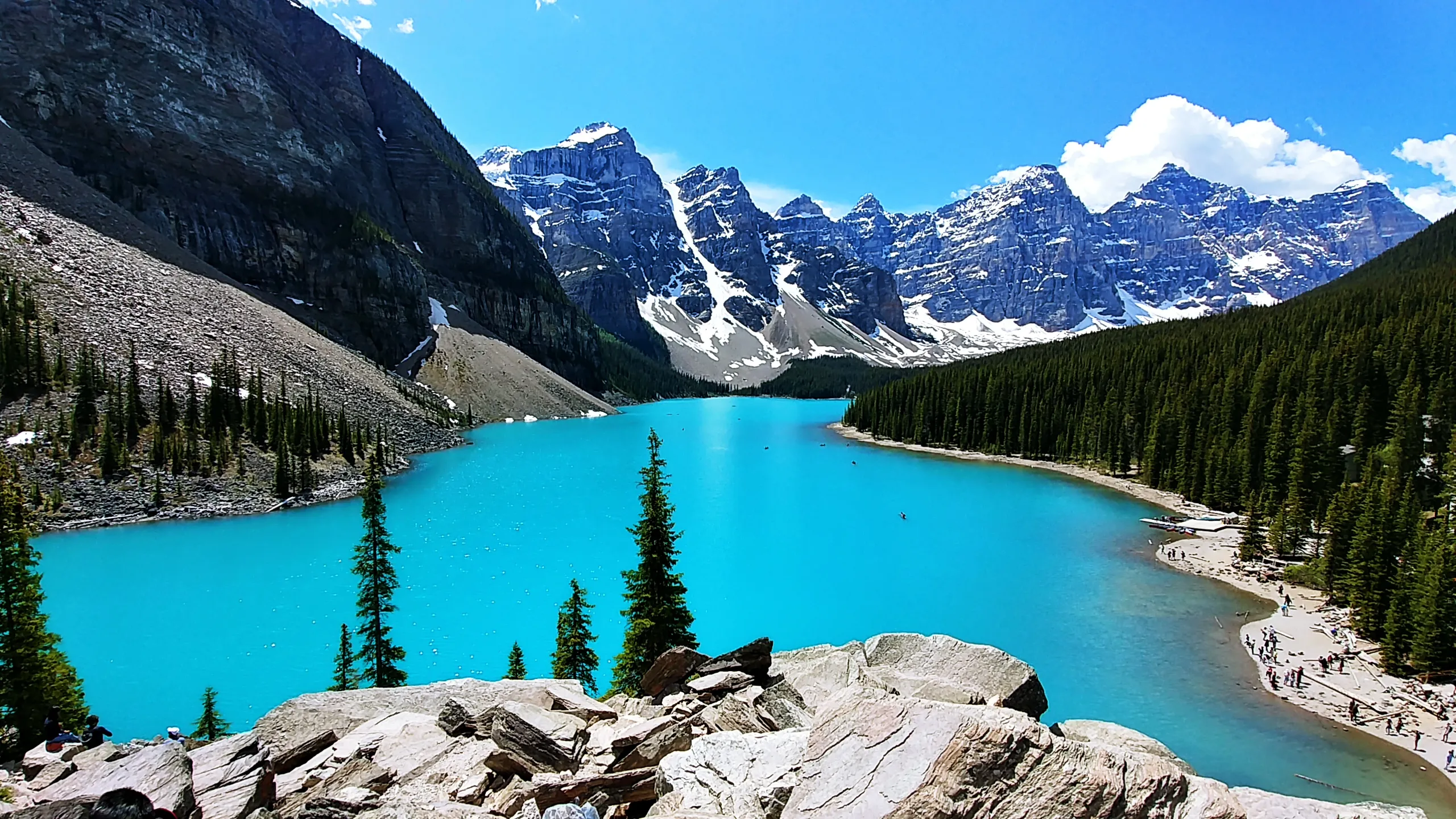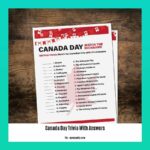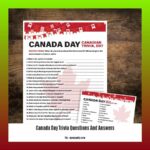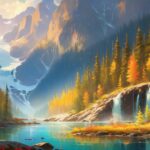Get ready to dive into the world of the Rocky Mountains! These mighty peaks are like nature’s skyscrapers, stretching from Canada all the way down to New Mexico. They’re the perfect place to hike, camp, and explore the wild side of America. So, lace up your boots and pack your backpacks, because we’re about to embark on an epic adventure through one of Earth’s most incredible places.
Where Are the Rocky Mountains?
Ever heard of a mountain range so massive it stretches over 3,000 miles? That’s the Rocky Mountains for you! Picture this: a colossal spine of peaks and valleys running all the way from the frosty north of Canada down to the sunny southwest of New Mexico. We’re talking a natural border that divides the vast Great Plains from the western edge of the United States. And trust me, this isn’t just any old mountain range; the Rockies are home to some of the most jaw-dropping national parks you’ll ever see.
Here’s the thing about the Rockies: they’re not just one big, uniform mountain chain. Nope, they’re actually made up of at least 100 smaller ranges, each with its own unique personality. Think of it like a giant family reunion, with everyone from the towering Canadian Rockies with their crystal-clear lakes to the snow-capped Colorado Rockies and the dramatically sculpted Tetons.
Up in Canada, the western edge of the Rockies is defined by a unique feature: the Rocky Mountain Trench, a long, narrow valley that looks like it was carved out by a giant ice scraper. Meanwhile, as you venture further south into the Northern Rockies, you’ll encounter the Lewis and Bitterroot ranges, gracing the landscapes of Montana and Idaho with their rugged beauty.
Did you know that the Rocky Mountains are home to the world’s largest deposit of dinosaur fossils? interesting facts about the rocky mountains
What Are The Geographic Coordinates Of The Rocky Mountains?
Picture this: a majestic mountain range so vast it stretches over 3,000 miles, cutting through the heart of North America. That’s the Rocky Mountains for you! They’re like a giant backbone, running all the way from northern British Columbia in Canada down to the sunny state of New Mexico in the US. If you were to pinpoint them on a map using those fancy geographic coordinates, you’d be looking at roughly 40°N to 60°N for latitude and 105°W to 125°W for longitude. That’s a whole lot of mountain!
Now, you might be wondering where exactly these incredible mountains begin and end. It’s a bit tricky because nature doesn’t always follow straight lines. If we’re talking about the eastern edge, most folks point to the Black Hills of South Dakota – a sight to behold in their own right. These hills are like the grand finale of the Rockies as you travel east.
The western border, however, is a bit more up for debate. Some say the Wasatch Range in Utah marks the spot where the Rockies fade into the Great Basin. It’s like the mountains are gently easing you into the dramatic landscapes of the west.
And speaking of dramatic, let’s talk about the highest peak in this magnificent range: Mount Elbert. This Colorado giant stands tall at a breathtaking 14,440 feet above sea level. That’s a whole lot of “thin air” for adventurous climbers! It’s no wonder Mount Elbert is a legendary destination for outdoor enthusiasts – the views from up there are simply awe-inspiring.
Here’s a handy table to summarize all that:
| Feature | Description |
|---|---|
| Length | Approximately 3,000 miles |
| Northernmost Point | Northern British Columbia, Canada |
| Southernmost Point | New Mexico, USA |
| Easternmost Point | Black Hills, South Dakota |
| Westernmost Point | Wasatch Range, Utah (debated) |
| Highest Point | Mount Elbert, Colorado (14,440 feet) |
What Are the Different Sections of the Rocky Mountains?
Picture this: the Rocky Mountains, a gigantic chain of peaks stretching over 3,000 miles from the frosty north of Canada all the way down to the warm deserts of New Mexico. Now, to make sense of this vast natural wonder, we split it up into four main sections: the Canadian Rockies, the Northern Rockies, the Middle Rockies, and the Southern Rockies. Each one has its own personality and charm.
The Wild Beauty of the Northern Rockies
Let’s start our journey in the Northern Rockies. This section is a wild and rugged place, home to mountain ranges like the Selkirks, the Lewis Range, and the Bitterroots. Here, you’ll find some of the most jaw-dropping scenery in the world, with towering peaks, crystal-clear lakes, and dense forests.
Think Glacier National Park, a gem of the Northern Rockies. It’s a hiker’s paradise, with trails winding past glaciers, waterfalls, and meadows bursting with wildflowers. Keep your eyes peeled for wildlife too – grizzly bears, elk, and mountain goats all call this place home.
The Hidden Gems of the Middle Rockies
Next, we venture into the often-overlooked Middle Rockies. While they might not have the same fame as their northern and southern siblings, they’re full of hidden treasures just waiting to be discovered.
Take the Grand Tetons, for example. These iconic peaks shoot straight up from the valley floor in Wyoming, creating a dramatic backdrop that’ll leave you breathless. Then there’s the Greater Yellowstone Ecosystem, a vast wilderness area teeming with wildlife and geothermal wonders like geysers and hot springs. It’s a place where you can truly get away from it all and reconnect with nature.
Reaching for the Sky in the Southern Rockies
Now, let’s head south to where the peaks reach their highest – the Southern Rockies. This section boasts an impressive collection of “fourteeners,” mountains soaring above 14,000 feet. Colorado is the heart of this region, home to famous peaks like the Maroon Bells, known for their almost perfectly symmetrical reflections in Maroon Lake, and Pikes Peak, which inspired the song “America the Beautiful”.
But the Southern Rockies don’t stop there – they stretch into parts of Wyoming and New Mexico too, offering a diverse range of landscapes to explore, from alpine meadows to high desert canyons.
Seeking Knowledge About the Middle Rockies
Eager to learn more about the Middle Rockies? You’re in luck! There are plenty of great resources out there to help you plan your adventure.
Start with trusted sources like the National Park Service and the U.S. Forest Service websites. They offer a wealth of information on hiking trails, camping spots, and other recreational activities. You can also check out local tourism boards for insider tips on the best places to eat, sleep, and explore.
No matter which section of the Rocky Mountains calls to you, one thing is certain: you’re in for an unforgettable experience!
What Is The History Of The Rocky Mountains?
Unveiling the Majesty of the Rocky Mountains
The Rocky Mountains have always held a certain mystique. Their sheer size and beauty are captivating, but have you ever stopped to think about how they came to be? Let’s dive into the fascinating history of these majestic peaks, exploring their geological origins and the deep cultural significance they hold for Indigenous Peoples.
Origins of a Mountainous Legacy
Imagine Earth millions of years ago, a vastly different world. Around 540 million years ago, during a time geologists call the Precambrian Era, the story of the Rockies began. It wasn’t a quick process, though. It took millions upon millions of years for these mountains to rise. The main event? The Laramide Orogeny. This period was marked by powerful tectonic plate collisions, causing the Earth’s crust to buckle and fold like a rug being pushed together. This immense pressure created the soaring peaks and dramatic valleys we associate with the Rockies today.
Cultural Significance: A Timeless Bond with the Land
For countless generations, the Rocky Mountains have been far more than just rock and stone to the Indigenous Peoples who call this region home. These mountains represent a sacred connection to the Earth, a source of life, and a living library of their history. The land provides food and water, but it’s also woven into their very identity. Traditional stories, sacred ceremonies, and ancestral knowledge are all deeply intertwined with the rhythm of the mountains, reflecting a relationship built on respect and reverence.
Key Takeaways:
- The creation of the Rocky Mountains was a slow burn, taking over 540 million years starting way back in the Precambrian Era.
- It was a clash of titans – tectonic plates smashing together – during the Laramide Orogeny that really sculpted the Rockies into the dramatic landscape we see today.
- For Indigenous Peoples, the Rockies are more than just a backdrop; they’re a vital part of their cultural and spiritual heritage, a connection passed down through countless generations.
FAQ
Q1: Where do the Rocky Mountains begin and end?
A1: The Rocky Mountains stretch approximately 3,000 miles (4,800 kilometers) from northern British Columbia in Canada to New Mexico in the southwestern United States.
Q2: Which US states have the Rocky Mountains?
A2: The Rocky Mountains pass through eight US states: Washington, Idaho, Montana, Wyoming, Utah, Colorado, Arizona, and New Mexico.
Q3: Which Canadian provinces have the Rocky Mountains?
A3: The Rocky Mountains are present in three Canadian provinces: British Columbia, Alberta, and the Yukon.
Q4: What is the highest peak in the Rocky Mountains?
A4: Mount Elbert in Colorado is the highest peak in the Rocky Mountains, with an elevation of 14,440 feet (4,401 meters) above sea level.
Q5: What are the major sub-ranges of the Rocky Mountains?
A5: Some of the well-known sub-ranges of the Rocky Mountains include the Canadian Rockies, the Colorado Rockies, the Tetons, the Wasatch Range, and the Bitterroot Range.
- Georgia Platform: A Southern Strategy, 1850s - March 31, 2025
- How many weeks is 40 days: Quick Conversion Guide for Accurate Results - March 31, 2025
- How many feet is 300 meters? 984 Feet: Understand Length Conversions Easily - March 31, 2025
















